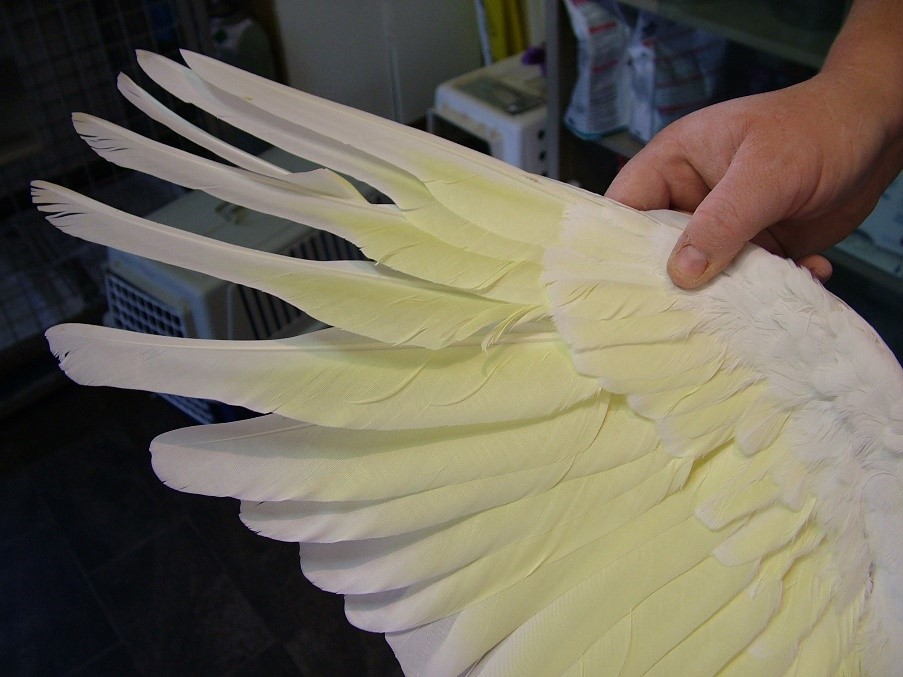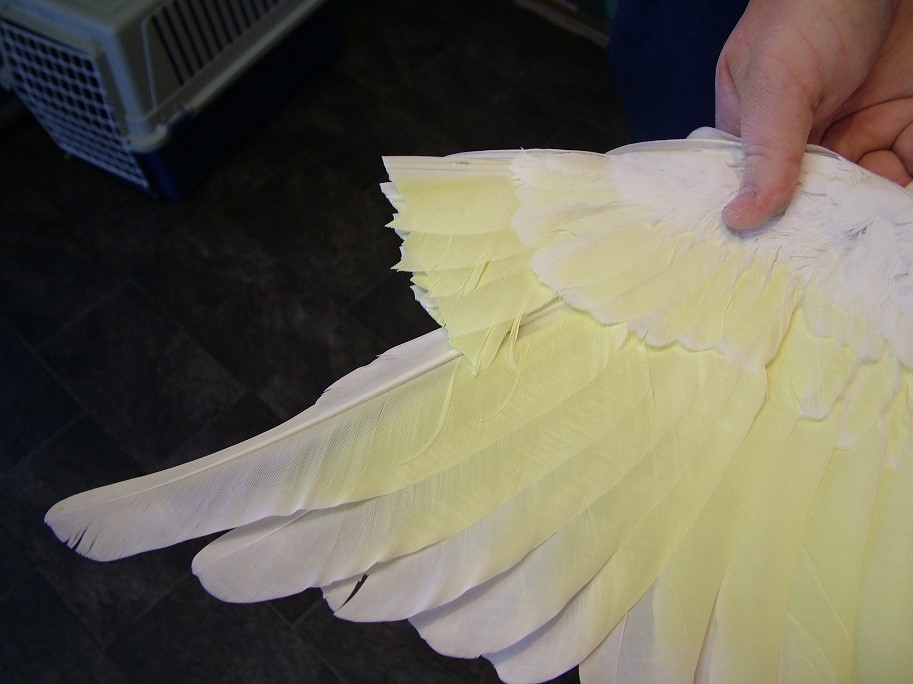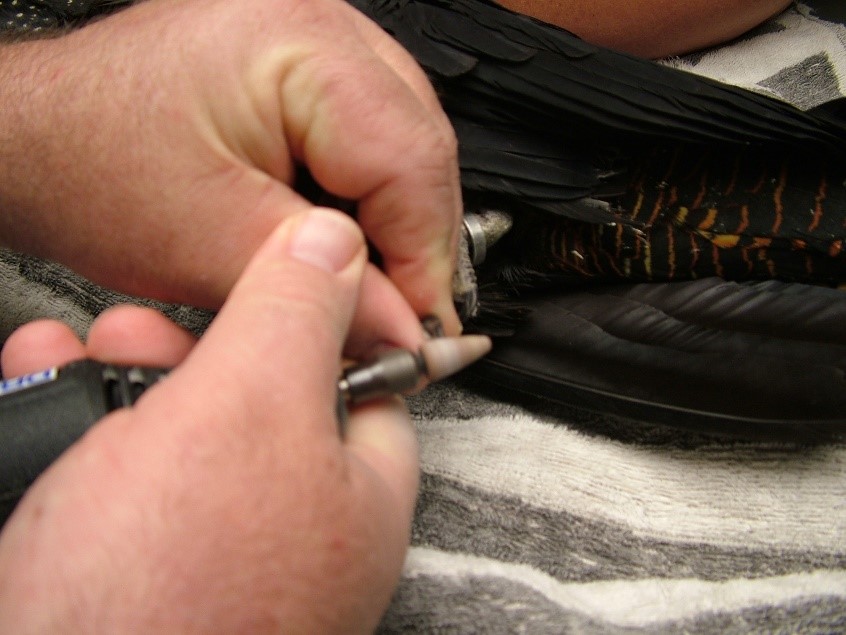Many bird owners like to groom their birds, i.e., trim their wings, nails, and beaks. This has to be done carefully, as your bird may be injured if the correct techniques are not used. Often these procedures are best done by a veterinarian experienced with birds.
Wing trimming
Wing trimming is a grooming technique designed to keep birds safe while indoors. It is not a means of preventing flight – rather, it lessens your bird’s ability to gain height and speed while in flight. It does not mean that you can take your bird outside without appropriate and safe restraint. Some simple rules for wing trimming:
- Do not trim a bird’s wings until the bird has learnt to fly. It is only by flying that your bird can learn how to land – the most difficult part of flight. More birds are injured by clumsy landings than anything else associated with flight.
- Trim only the primary feathers – the long feathers coming off the end of the wing (from the wrist to the wing tip. Your bird needs their secondary and tertiary feathers to slow down and land safely.
- Trim the same number of feathers on both wings – one-winged clips unbalance your bird and make a bad and potentially dangerous landing more likely.
- Never rely on the effect of a wing trim – the trimmed feathers will moult out and be replaced, and when this will happen cannot be predicted.
- Trim 5mm below the edge of the coverts (these are the contour feathers that overlap and cover the bases of the flight feathers) – this avoids cutting through a ‘blood quill’ – a newly erupted feather with blood vessels and nerves in the shaft.


Common injuries associated with poorly performed wing trims include severe body injuries from landing heavily, wing tip trauma, fractured legs and wings, and a loss of confidence that may lead to behavioural problems (e.g., feather damaging behaviour).
Nail trimming
Trimming a bird’s nails is usually performed to avoid scratches and lacerations to your hands and arms while handling them. Occasionally birds with malnutrition and/or liver disease will develop overgrown nails, requiring trimming. In these cases, the nails are often deformed and soft or flaky. Birds with nails like this should be investigated for underlying problems.
The nail consists of a hard keratin plate on top of a softer keratin plate, encasing the last joint of the toe and the growth area of the nail (the nail bed). The top plate grows faster than the soft plate underneath, giving the nail its characteristic curved shape. The nails are normally trimmed naturally by perching on branches of varying diameters, shapes, and textures. Lack of opportunities to perch naturally can result in overgrown sharp nails.
The nails can be trimmed with either small ‘cat’ nail trimmers or, in larger birds, a hobby grinder (e.g. Dremel).

The nail is trimmed at a level a few millimetres below the ventral plate. If bleeding occurs, it can be stopped by applying pressure with your fingers for a few minutes, or by pressing the nail into dry Condy’s Crystals (potassium permanganate) or a wet bar of soap.
Beak trimming
Although many birds need a regular beak trim, it is important to understand that this is not a routine grooming procedure. Birds will normally keep their beak in a normal shape and length by chewing on branches and other hard wooden structures. Overgrown beaks can result from lack of such chewing opportunities or, more commonly, from malocclusion or chronic liver disease. If your bird has not needed a beak trim before, they will need to be checked by a vet for these problems.
It must also be remembered that some birds, e.g., the Long-Billed corella, have a naturally long beak. It is a good idea to check what length a normal beak in unfamiliar species should be.
It is best to consult your veterinarian about whether and how to trim your bird’s beak. Although small birds e.g., cockatiels and budgerigars can be trimmed with nail clippers, larger birds usually require trimming with a Dremel® hobby grinder to both shape and shorten the beak. Care must be taken with soft or flaky beaks not to inadvertently damage the beak. If your bird has a severely overgrown beak an avian veterinarian should be consulted and general anaesthesia may be required to achieve a good result without unduly stressing your bird, especially if there is also malocclusion (when the upper and lower parts of the beak don’t align when closed).
Reference
Doneley B (2018) Avian Medicine and Surgery in Practice: Companion and Aviary Birds, 2nd ed. CRC Press
